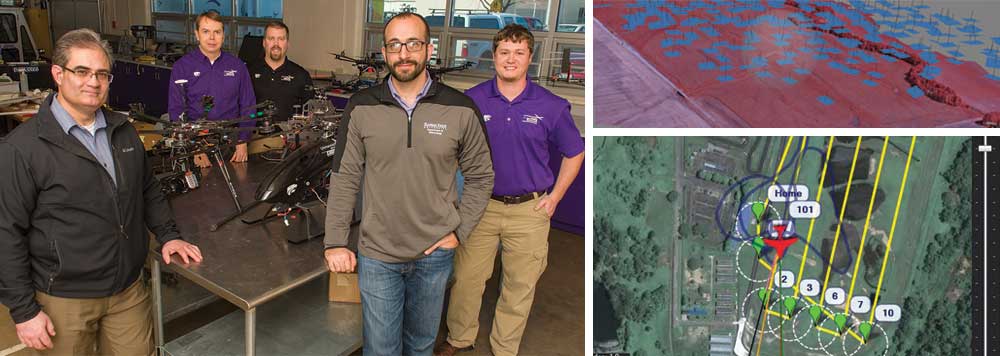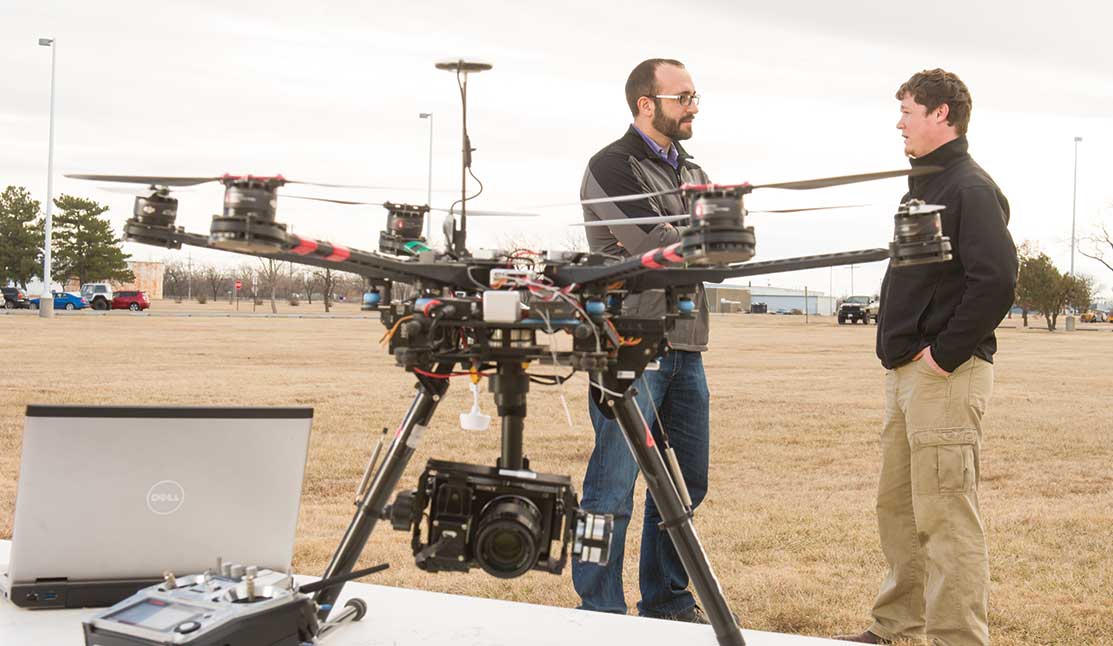Eye in the sky
By Megan Saunders
For years, it's worked the same way. A crop consultant stands in front of a 250-acre wheat field, knowing he has 10,000 more acres to scout. He walks the recommended pattern, looking for signs of pest damage and potential yield losses. Often, the consultant makes an assessment based on a limited vantage point, and moves on to the next field, especially when time is limited.
Researchers at Kansas State University are hoping to give producers and consultants access to the bigger picture by using unmanned aerial systems, or UAS. Brian McCornack, associate professor of entomology, is exploring UAS as an efficient method to detect pest insects and diseases — including invasive species — in food crops such as wheat before outbreaks occur.
McCornack is the U.S. principal investigator on the three-year $1.7 million project "Optimizing Surveillance Protocols Using Unmanned Aerial Systems." The project also involves Kansas State University Salina and the Plant Biosecurity Cooperative Research Centre, a consortium of Australia and New Zealand's leading governmental research institutions and entities.
"Australia and the U.S. share similar agricultural systems and concerns," McCornack said. "Unmanned aerial systems hold a lot of promise because they're relatively inexpensive and you can cover a lot of ground in a short amount of time. Instead of only seeing a section of the field, we can take the UAS, fly over the field and quickly assess the crop for areas of interest."

Initially, the project will target the Russian wheat aphid and wheat stripe rust, also referred to as "yellow rust." Researchers are working with landowners and the Federal Aviation Administration for approval to begin conducting approved UAS flights in wheat fields around Kansas in spring 2015.
"We'll first look at different cameras and sensors to find those that will detect our target species," McCornack said. "Once existing sensors have been identified, we'll fly them over production fields that landowners have given us permission to scout."
Researchers will use UAS to repeatedly monitor wheat fields during the growing season in coordination with landowners and crop consultants. Aerial images captured by UAS will be compared and used to identify field sections that have abnormalities, possibly caused by insects or diseases.
"Currently, early detection requires a great amount of luck and sweat," said McCornack. "A farmer or scout has to make an educated guess regarding where to check for infested plants. It works, but if a producer has several thousand acres to manage, it's not very efficient. With the help of remote sensing, you can scan a wide area in a short amount of time. It's not a guarantee, but it can help us understand how to quickly manage existing pests or even spot new ones."
In addition to testing for accuracy, researchers will study how to refine the aerial images captured by the UAS to provide landowners with the most useful data. This could include comparing images taken at varying heights, camera resolutions or optimal flight speeds.

"Most of the technology we're using is commercially available," said McCornack. "We're still not going to be able to tell you with 100 percent certainty that this species is in the field, but our hope is to improve first rates and increase sampling efficiency using current technologies."
The research team from Kansas State University is collaborating with the Kansas Department of Agriculture, K-State Research and Extension, and many Australian partners.
